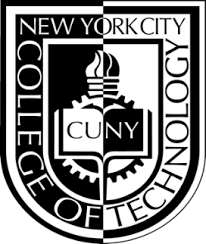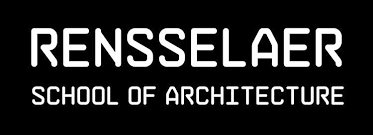Feature
Schools of Thought
A student’s education in architecture depends on how the university’s program views the future of architecture.
by Fred A. Bernstein
How are area schools preparing students for architecture practice? Asking deans and department chairs that question elicited some surprising answers.
That’s because not every school sees its role as training future architects—either because the majority of graduates choose other fields, or because those who do become architects can learn the ins and outs of practice after graduation. Teaching practical skills, the so-called nitty-gritty, “isn’t considered aspirational enough for the top schools,” said one professor who requested anonymity.
Nader Tehrani, who stepped down as dean of the Irwin S. Chanin School of Architecture at New York’s Cooper Union in June, said the goal isn’t to prepare students for today’s way of working. “Professional practice is evolving as we speak,” Tehrani said. “We may teach skills today that are on the verge of obsolescence in practice. A better goal might be to prepare students for the uncertainties they will face.”
One way Tehrani has done that is by creating studio courses where there are loopholes along with the constraints. “We’re inviting students to play with the parameters, to speculate with them rather than simply comply.” That method, he said, “may allow pedagogies to impact practice as much as the other way around.”
Nicholas de Monchaux, the head of architecture at the Massachusetts Institute of Technology in Cambridge, has a similar view of the relationship between architecture academia and practice: that it’s the school’s responsibility to help the profession evolve, to accommodate students’ increasingly diverse backgrounds and goals. “Creating many trajectories into our school necessitates helping students create many trajectories out of our school as well,” he said. “Imagining that a truly diverse body of students will be shaped by us into a single, narrow channel on graduation is misunderstanding the nature of what it means to be an inclusive community.” De Monchaux added: “We are located in one of the world’s premier research institutions. As such, we understand that our contribution sometimes takes the form of researching (and so expanding) the future of the profession itself.”
Evan Douglis, dean of the School of Architecture at the Rensselaer Polytechnic Institute in Troy, NY, would like to see students receive training in subjects other than architecture. “There has to be a significant paradigm shift,” he said. “It’s incredible to sit in on final reviews where, although conceptually these projects are ahead of their time, there’s a kind of inability to move into an implementation plan, both from an entrepreneurial standpoint and a technological perspective.” He added: “Today we have to be far more expansive in terms of exposing our students to alternative coursework, research opportunities, and co-terminal degrees (beyond the foundation knowledge required by National Architecture Accrediting Board) concerning the development of next-generation building systems and novel entrepreneurial models.”
Architecture dean at Brooklyn’s Pratt Institute, Harriet Harriss said it is the school’s “ethical responsibility to acknowledge that most architecture students don’t become architects.” Architecture training, she added, “is applicable to more than the design of buildings—something we neglect to appreciate about our skill set.”
Instead of seeing students’ choice of other career paths as a liability, Harriss sees it as an opportunity that requires her to pay attention to “what new disciplines emerge, what hybridizations will be necessary.” In the academy, it means there must be more interdisciplinary teaching. “One of architecture’s conceits,” she said, “is that architects should teach architects.” In fact, she proposed, “architects need to learn from climate scientists, botanists, computer scientists”—even from professionals in fields that seem tangential.
At other area schools, preparing students to work at architecture firms is very much the goal. Marta Gutman, the recently appointed dean of the Bernard and Anne Spitzer School of Architecture, The City College of New York, said she is trying to combat “the misbegotten notion that after City our students need to go to fancy schools to get finished. They don’t. They’re fine. They’re great. They don’t need access to Yale to be recognized. They need to be recognized by the profession for all they can do when they finish a high-quality urban public school of architecture.”
The School of Technology & Design, New York City College of Technology (usually called CityTech), in Downtown Brooklyn, may have the largest architecture program in the area, with some 800 associate’s and bachelor’s degree students. According to Sanjive Vaidya, chair of the Architectural Technology department, about 85 percent of them identify as students of color. “My goal is not just to crank out more architects,” he said. “We want them to be able to apply their technical knowledge to whatever they choose to take on, in ways that make them integral to their communities.”
For those who do want to work at architecture firms, Vaidya has set up a mentorship program through the Architectural League. “It’s not just job-related,” he explained. “It’s general mentorship.” Among the first mentors are Kim Yao of ARO, Ada Tolla of LOT-EK, and Thomas Phifer, founder of Thomas Phifer and Partners. “We talk all the time, but there is no set agenda,” Phifer said of his mentee. “We visited the Noguchi Museum together, and I reviewed her résumé and portfolio and one of her studio projects. All good.”
Vaidya has also built relationships with Diller Scofido + Renfro, Robert A.M. Stern Architects, and Selldorf Architects “to give students—who may never have heard of these firms—an opportunity to get their foot in the door.” Normally, he said, his students have a hard time landing internships. “Their résumés and portfolios are not perfect.” So he invented the pre-internship program: Architects meet with students to talk about their work and the profession generally, and to get to know one another. “This is a chance for our students to shine,” said Vaidya. Pre-internship participants can then apply for “real” internships. “It’s been a game-changer for our students,” he said.
Selldorf Architects partner Lisa Green said the plan is working well. Selldorf met with CityTech students over Zoom last spring. From the group, Green said, “we hired two summer interns, who were great, and one stayed on part-time during the school year. We’re doing it again now in 2022—the connection with the school has only strengthened.”
At COOKFOX, Jared Gilbert, associate partner, said his firm is participating in the CityTech program “specifically to do our part to increase participation of underrepresented people” in the field. COOKFOX, he said, hired two CityTech students for internships that gave them “exposure to all the kinds of work that an entry-level designer might do at a firm like ours.”
Other architecture schools use studio courses to connect students to the world of practice. At the John H. Daniels Faculty of Architecture, Landscape, and Design of the University of Toronto, Sam Dufaux runs the required second-year design studio for students pursuing a master’s in architecture. He said his goal is to make it “the closest a design studio can be to what we do in architecture offices.”
To help students deal with the kind of constraints they would face in real life, including building codes and zoning, Dufaux has engineers from firms like Arup, Transsolar, Integral, and LERA give desk crits several times each semester. “The goal is for students to learn how to talk to consultants and know what questions to ask,” he explained. “It’s all about replicating as closely as we can the dynamic of a professional practice.”
He also brings in practicing architects to give talks. “I ask them not to present the pretty final images and polished narrative,” Dufaux said, “but rather to focus on the messy process and how solutions to specific constraints were found. We’ve even had clients joining the architects at the lectern to give their side of the story.”







